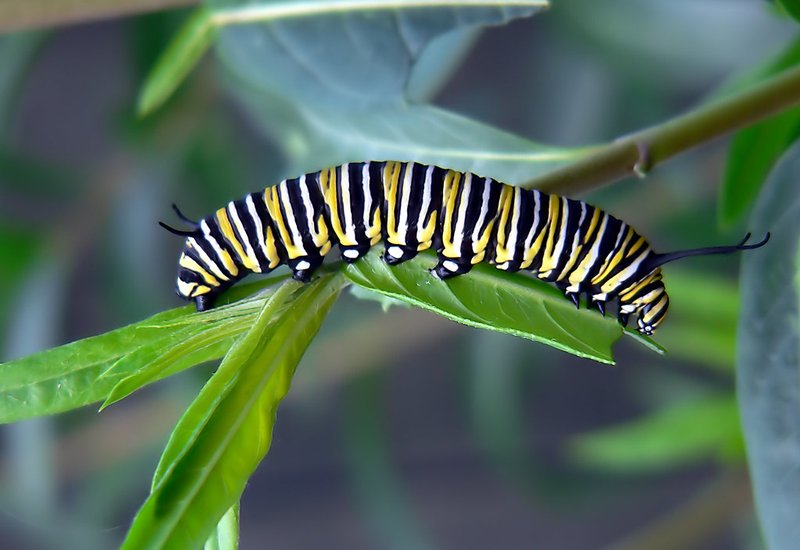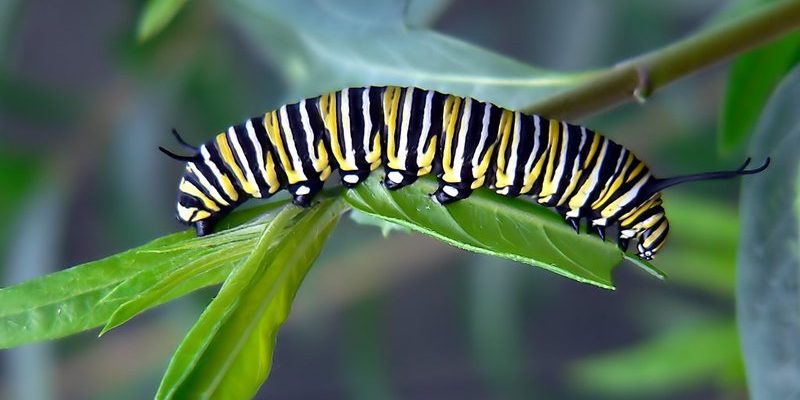
Inchworms, also known as measuring worms, are the larvae of moths belonging to the Geometridae family. They move with a distinctive looping motion that can seem charming at first glance—but don’t let their cute antics fool you! These small but mighty pests can cause significant damage to your cherished flowers and shrubs. So, if you’re cultivating a vibrant sanctuary of ornamental plants, understanding inchworms is key to maintaining their beauty and health.
What Are Inchworms, and How Do They Behave?
Let’s start with the basics. Inchworms are actually the larvae of certain types of moths. Their unique movement, where they contract and stretch their bodies, gives them that “inching” look. Imagine a tiny gymnast; they use this motion to mimic a twig, helping them dodge predators. These little critters come in various colors and sizes, often blending in with the foliage to camouflage themselves.
The life cycle of inchworms is pretty fascinating. They start life as eggs, hatch into larvae, and eventually transform into moths. While they’re in their larval stage, which can last several weeks, they are hungry little munchers. Inchworms feast on leaves, which is where most of the trouble begins for ornamental plants. You might spot them during the spring and early summer when they emerge in droves.
When inchworms are active, they can quickly defoliate a plant, stripping it of leaves to the point of looking bare. This not only affects the plant’s appearance but can also stress it, making it more vulnerable to disease and other pests. Think of it like this: if you were to lose all your hair at once, you’d probably feel less confident and more exposed, right? That’s how your plants feel when inchworms attack.
Signs of Inchworm Infestation
Now that you know what inchworms are, how do you know if they’re lurking in your garden? There are several signs to look for. First, keep an eye on your leaves. If they start to look ragged or have large holes in them, that’s a red flag. Inchworms tend to munch on the edges of leaves, leaving behind a distinctively chewed-up appearance.
Another clue is noticing tiny green droppings, often found on the leaves or the ground below the affected plants. These droppings are a clear sign of inchworm activity. And don’t forget to look for the inchworms themselves; they are about an inch long and can be green, brown, or even gray—perfectly designed to blend into their environment.
Sometimes, you might see tiny webs or silk strands connecting the leaves. This can indicate that inchworms are under attack. They create these silk threads to keep themselves secure as they munch away. If you see any of these signs, it’s essential to act fast; the quicker you respond, the easier it will be to minimize damage.
How Inchworms Damage Ornamental Plants
So, what exactly happens when inchworms feast on your ornamental plants? When these larvae eat the leaves, they don’t just ruin the look of your precious plants; they can inadvertently stunt their growth. Leaves play a vital role in photosynthesis—the process plants use to turn sunlight into energy. If inchworms are stripping the leaves bare, your plants can’t make enough food to thrive.
In addition to impacting growth, severe infestations can lead to plant stress. A stressed plant is more likely to become susceptible to diseases and other pests. Think of it like this: when you’re run down and exhausted, you’re more likely to catch a cold, right? Plants are no different. A healthy plant can better fight off invaders and illnesses, while a stressed one might struggle.
Some plants are more prone to damage than others. For example, tender annuals and young perennials can face severe consequences from inchworm feeding. On the other hand, established plants with tougher leaves may fare better but can still experience some level of damage. It’s essential to keep an eye on all plants in your garden, regardless of their age.
Preventing Inchworms in Your Garden
Now that you know the damage inchworms can cause, let’s look at how you can prevent them. One effective way is to promote a healthy ecosystem in your garden. Healthy plants are less attractive to pests. Here are a few tips:
- Plant Diversity: Including various types of plants can help deter inchworms. They’re less likely to find their preferred host if their food sources are spread out.
- Companion Planting: Some plants naturally repel pests. For instance, marigolds are known to keep many types of insects at bay.
- Encourage Beneficial Bugs: Ladybugs and lacewings are natural predators of inchworms. By creating an inviting habitat for these friendly insects, you can help keep inchworm populations in check.
Another preventive measure is to conduct regular garden inspections. Take a stroll through your garden, and closely examine the leaves. This can help you catch any inchworm activity early, allowing for quicker intervention.
Treating Inchworm Infestation
If you find yourself facing an inchworm infestation, don’t worry. There are several approaches to help tackle the issue. One of the safest methods is to manually remove the inchworms. Simply wear gloves and pluck them off the affected plants. It might feel a bit gross, but it’s highly effective!
For a more extensive infestation, consider using organic pesticides. Products containing Bacillus thuringiensis (Bt) can be useful. This naturally occurring bacterium targets caterpillars like inchworms while leaving beneficial insects unharmed. Spray it directly on the affected plants, following the instructions on the label.
Another option is to create a homemade insecticidal soap. Mix a few tablespoons of mild dish soap with water in a spray bottle and apply it to the infested areas. This can help suffocate the inchworms. Just be sure to test a small area first to make sure your plants tolerate it.
Inchworms might seem innocuous, but don’t underestimate their potential for damage. These tiny creatures can wreak havoc on your ornamental garden if left unchecked. By understanding how inchworms affect your plants and implementing preventive measures, you can enjoy a vibrant and healthy garden.
Stay vigilant by regularly inspecting your plants and adopting eco-friendly pest control methods. Remember, a healthy garden is a happy garden. So keep your eyes peeled, and don’t let inchworms take the joy out of your gardening experience!

